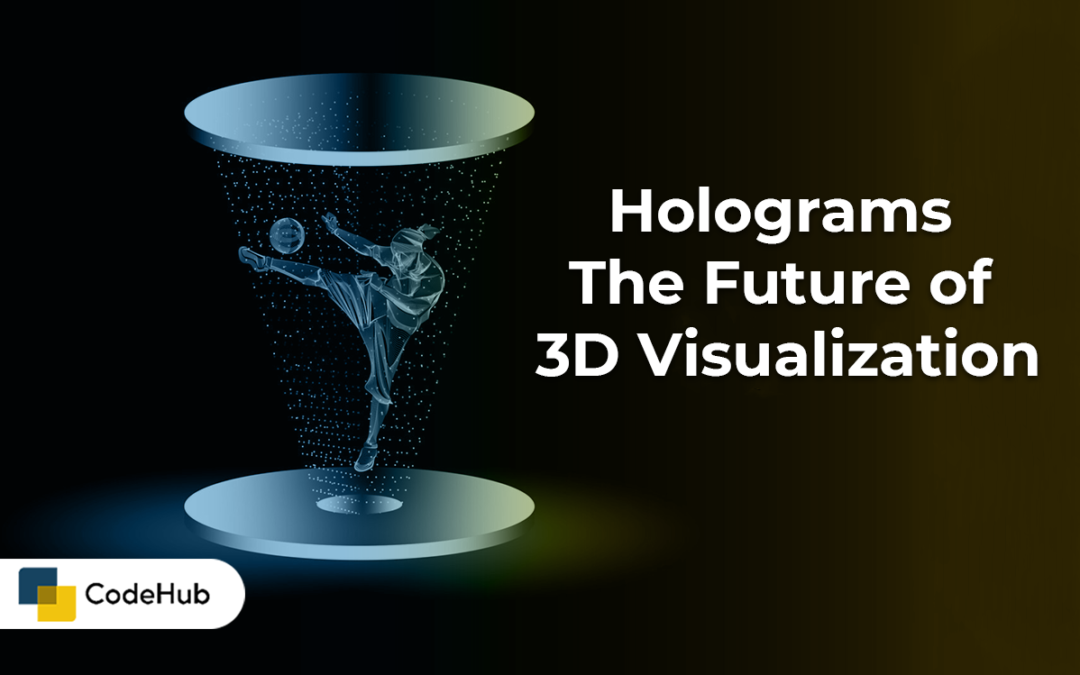Imagine being able to see and interact with realistic 3D images of anything you want, from your favorite celebrities to distant planets. Imagine being able to create and share your own holographic content with others, or even experience immersive virtual reality without any bulky headsets or glasses. This is the vision of hologram technology, a field that has been evolving rapidly in recent years thanks to advances in artificial intelligence, data transmission, and display devices.
Holograms are optical recordings of an object or scene, which can be created by combining two different light sources. Unlike conventional 2D images, holograms offer a shifting perspective based on the viewer’s position, and they allow the eye to adjust focal depth to alternately focus on foreground and background. Holograms deliver an exceptional representation of the 3D world around us, and they have many potential applications in various domains.
How are holograms made?
The first successful demonstration of hologram technology was created by Dennis Gabor in 1948, who was awarded the Nobel Prize in Physics for his invention. He found that when light waves were reflected off an object onto a flat surface and recorded, they could then be replayed as a 3D image. The word “hologram” comes from the Greek words “holos” meaning “whole” and “gramma” meaning “message”. Therefore, it stands to say that this new technology allows for whole messages to be sent via laser light particles.
Since then, many new versions of holograms have been created that show different levels of detail and realism. The early stages of this technology were largely restricted by limitations on materials and power sources. However, recent developments in holographic displays now allow for these visions from the future to become reality.
One of the most promising methods for creating holograms is called tensor holography, which was developed by researchers at MIT. This method uses artificial intelligence to generate 3D holograms in real-time, and it is so efficient that it can run on a smartphone. Tensor holography uses deep learning algorithms to encode the information of a 3D scene into a tensor, which is a mathematical object that can store multidimensional data. The tensor can then be decoded by a holographic display device, which projects the light waves onto a screen or into thin air.
What are the benefits of holograms?
Holograms have many advantages over traditional 2D images or videos. They can provide a more natural and immersive way of visualizing and interacting with 3D content, which can enhance our perception and understanding of the world. Holograms can also enable new forms of communication, entertainment, education, and art.
Some of the possible uses of holograms are:
- Virtual reality: Holograms can create realistic and dynamic 3D environments that can be explored and manipulated by users. Unlike VR headsets, which can cause nausea and eye strain, holograms can offer a comfortable and seamless experience that does not require any special equipment or accessories.
- 3D printing: Holograms can be used to design and prototype 3D objects before printing them with physical materials. This can save time and resources, as well as allow for more creativity and customization.
- Medical imaging: Holograms can provide high-resolution and accurate 3D images of human organs, tissues, or cells, which can help doctors diagnose and treat diseases, as well as train medical students.
- Tourism: Holograms can recreate historical sites or landmarks that are inaccessible or damaged, allowing tourists to visit them virtually and learn about their history and culture.
- Entertainment: Holograms can create stunning visual effects and performances that can captivate audiences. For example, holograms can bring back deceased celebrities or musicians to life on stage, or create interactive games and shows that involve the viewers.
What are the challenges of holograms?
Despite the great potential of hologram technology, there are still some challenges and limitations that need to be overcome before it can become widely available and accessible. Some of these challenges are:
- Cost: Holographic displays are still expensive and complex to produce and maintain. They require high-quality materials and components, as well as sophisticated software and hardware systems.
- Data: Holograms require large amounts of data to encode and decode the 3D information of a scene. This poses challenges for data storage, transmission, and processing, especially for real-time applications.
- Quality: Holograms still have room for improvement in terms of resolution, brightness, color fidelity, and viewing angle. Some holograms may also suffer from noise or artifacts that reduce their clarity and realism.
- Ethics: Holograms raise some ethical issues regarding privacy, security, authenticity, and consent. For example, how can we ensure that holograms are not used for malicious purposes or without permission? How can we verify the source and accuracy of holographic content? How can we protect the rights and dignity of the people or objects that are represented by holograms?
Conclusion
Hologram technology is a fascinating and promising field that has the potential to revolutionize the way we see and interact with the 3D world. By combining artificial intelligence, data transmission, and display devices, holograms can create realistic and dynamic 3D images that can be used for various purposes. However, there are still some challenges and limitations that need to be addressed before holograms can become mainstream and accessible. As hologram technology advances, we can expect to see more applications and innovations that will shape the future of 3D visualization.

